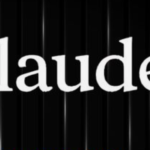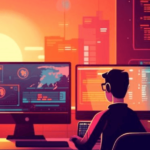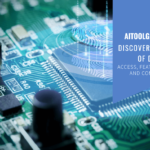While Suno excels at generating full songs, it currently cannot create formal lead sheets. Lead sheets, which typically contain a melody line, chord symbols, and lyrics, remain an essential tool for musicians to quickly understand and interpret songs.
As AI music technology continues to evolve, the potential for programs like Suno to incorporate lead sheet generation in the future remains an exciting possibility for the music creation landscape.
Understanding Lead Sheets
A lead sheet is a concise form of musical notation that provides the essential elements of a song on a single page. It typically contains three key components: the melody line, chord symbols, and lyrics (if applicable).
The melody line is written in standard musical notation on a staff, representing the main tune of the song.
Chord symbols are placed above the staff, indicating the harmonic structure using letters, numbers, and symbols to represent different chord types.
Lyrics, when present, are usually written below the staff, aligned with the corresponding notes of the melody.
Lead sheets are crucial tools for musicians and composers, offering a simplified yet comprehensive representation of a song’s structure.
They allow performers to quickly grasp the fundamental elements of a piece, facilitating improvisation and arrangement.
For jazz musicians, lead sheets are particularly valuable, as they provide a framework for creative interpretation while maintaining the song’s core elements.
Composers often use lead sheets as a starting point for more complex arrangements or as a means to communicate their ideas to other musicians.
The versatility of lead sheets makes them indispensable in various musical contexts, from live performances and recording sessions to songwriting collaborations and music education.
Their concise format enables musicians to learn and memorize songs efficiently, making them an essential resource in the professional music world.
Suno’s Ability to Create Lead Sheets
Suno AI has made significant strides in music generation, but its ability to create formal lead sheets is currently limited.
While Suno excels at generating complete songs with melodies, harmonies, and lyrics, it does not directly output standard musical notation or chord charts in a lead sheet format.
For melody generation, Suno demonstrates impressive capabilities. It can create original melodies that fit specified genres and styles, incorporating appropriate rhythms and phrasing.
These melodies are generated as audio rather than written notation, which is a key distinction from traditional lead sheets.
Regarding chord progressions, Suno implicitly creates harmonic structures as part of its song-generation process.
The AI understands and implements chord progressions that suit the specified genre and complement the generated melody.
However, these chords are embedded in the audio output rather than explicitly notated as chord symbols typically found on lead sheets.
Suno’s lyric generation capabilities are quite advanced. It can produce coherent and contextually appropriate lyrics that match the mood and theme specified in the user’s prompt. The lyrics are typically output as text alongside the generated audio.
The main limitation in producing standard lead sheet notation is that Suno does not generate written musical notation or chord symbols. Its primary output is audio, which would require transcription to create a traditional lead sheet.
This means that while Suno can generate the musical content that would typically appear on a lead sheet (melody, chords, and lyrics), it does not format this information in the standard lead sheet layout.
For musicians and composers looking to create lead sheets using Suno, additional steps would be necessary.
They would need to transcribe the generated audio into musical notation and chord symbols, either manually or using separate music notation software.
This process requires musical knowledge and skills that go beyond Suno’s current capabilities.
Challenges in AI-Generated Lead Sheets
Creating lead sheets using AI presents several challenges:
Complexity of musical notation: AI systems struggle to generate accurate and nuanced musical notation that captures all the subtleties of human-composed music. Translating AI-generated audio into standard notation for lead sheets remains difficult.
Nuances in chord voicings and progressions: While AI can produce basic chord progressions, it often lacks the sophisticated understanding of harmony and voice leading that human composers possess. Generating natural-sounding and musically interesting chord voicings is an ongoing challenge.
Capturing human creativity: AI-generated music often lacks the emotional depth, originality, and creative spark of human compositions. Replicating the intuitive decision-making and artistic choices of human songwriters remains elusive for AI systems.
Copyright and originality concerns: As AI models are trained on existing music, there are risks of inadvertently reproducing copyrighted material or creating derivative works. Ensuring true originality in AI-generated lead sheets while avoiding legal issues is a significant challenge.
Limitations in long-term structure: AI often struggles to maintain coherent musical structure over longer compositions, making it difficult to generate complete songs with verses, choruses, and bridges that flow naturally.
Lack of contextual understanding: AI may not grasp the cultural, emotional, or lyrical context that informs human songwriting, potentially resulting in lead sheets that feel disconnected or lacking in meaning.
Conclusion
The current state of AI lead sheet creation is still limited, as most AI music generation tools like Suno focus on producing complete audio tracks rather than traditional notation.
While AI can generate melodies, chord progressions, and lyrics, it lacks the ability to output formal lead sheets.
This technology has the potential to significantly impact the music industry by streamlining composition processes, offering inspiration to artists, and democratizing music creation.
However, it also raises concerns about copyright, originality, and the role of human creativity.
The future outlook for AI in music composition is promising, with expectations of more sophisticated tools that can generate notation, collaborate with human musicians, and potentially create entirely new genres of music.
- Guide to Connect Claude AI with Google Sheets in 2024 - October 11, 2024
- What is DreamGF? Honest review by Expert - October 9, 2024
- How to Use Claude AI in 2024? - October 7, 2024






